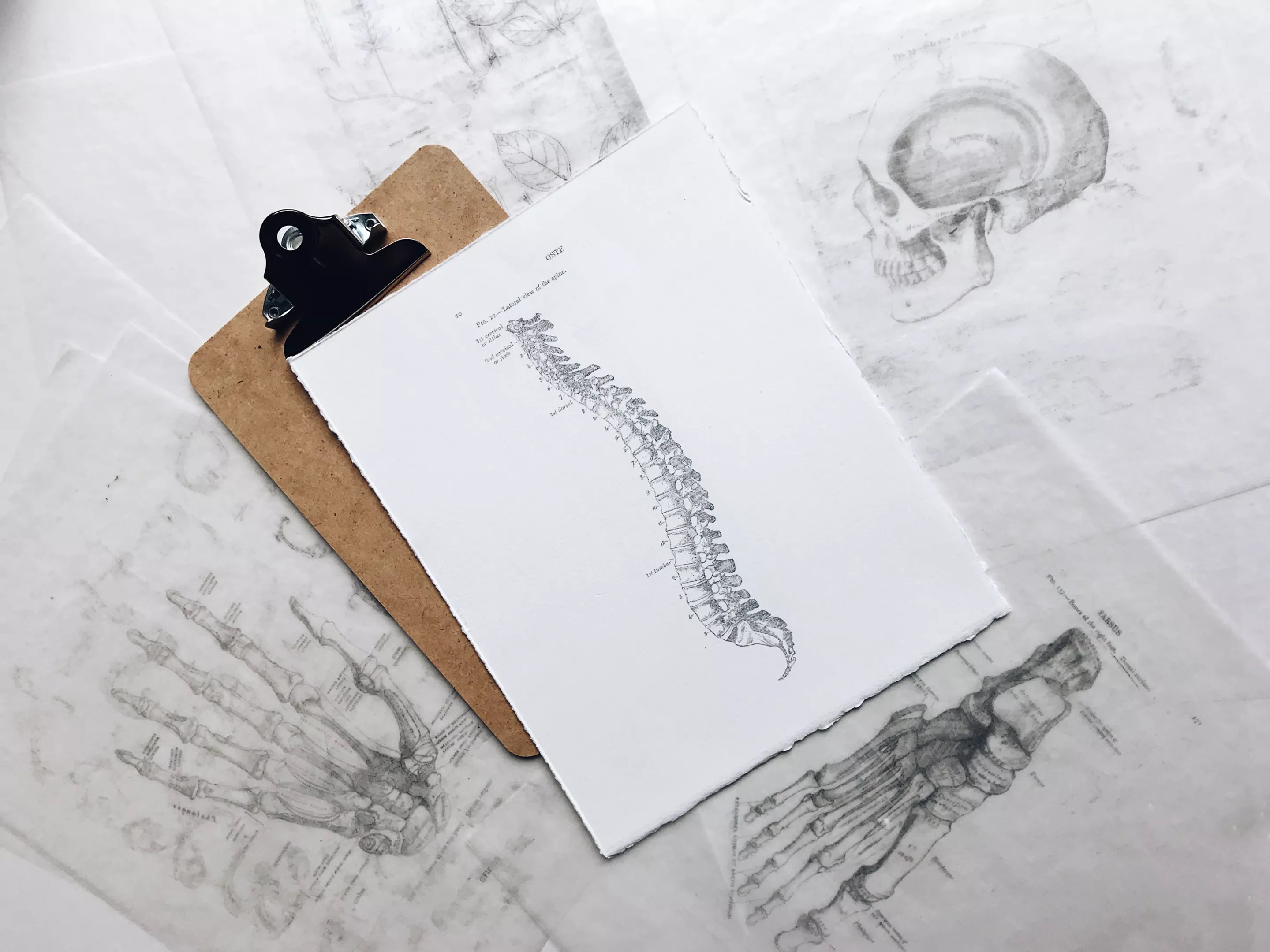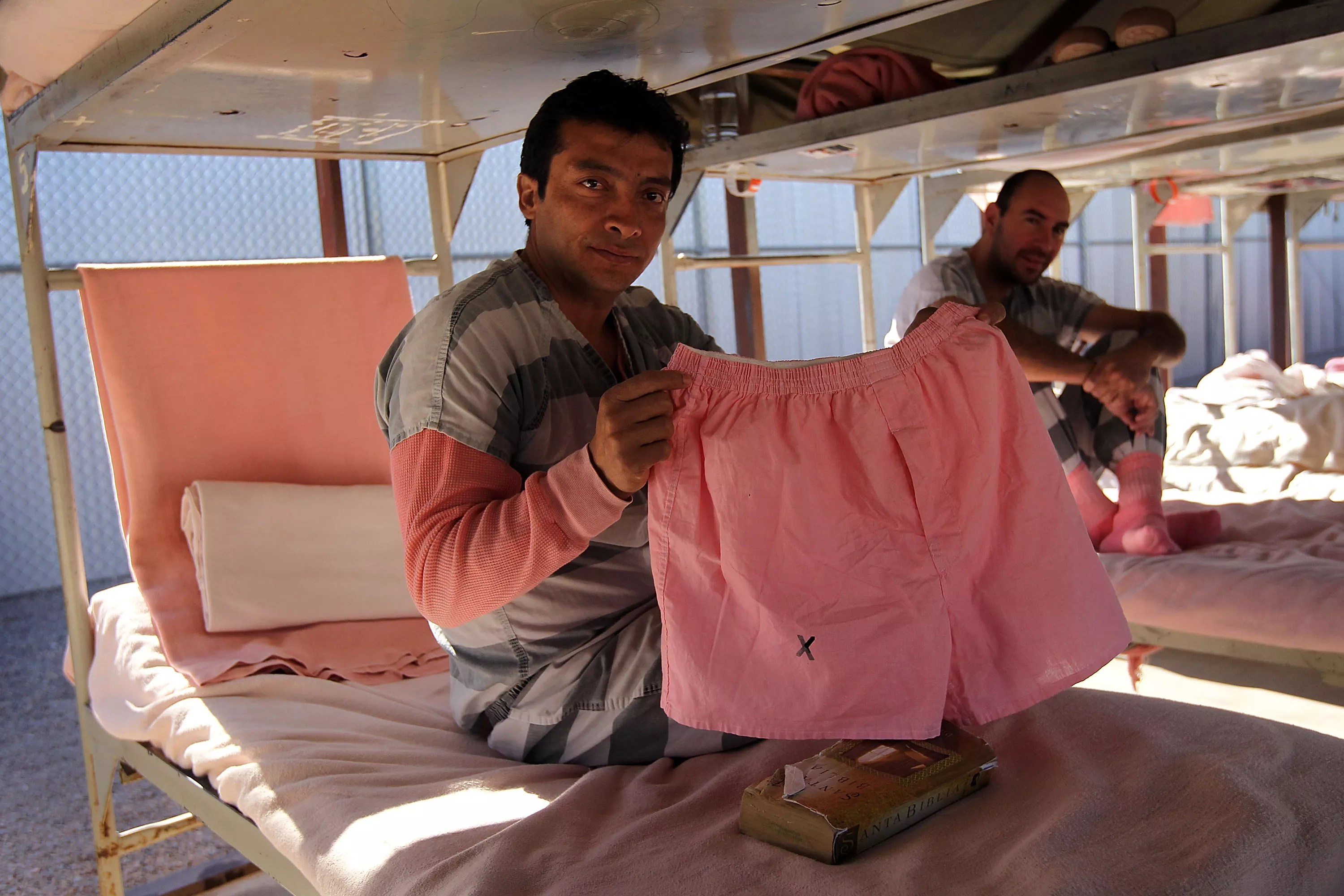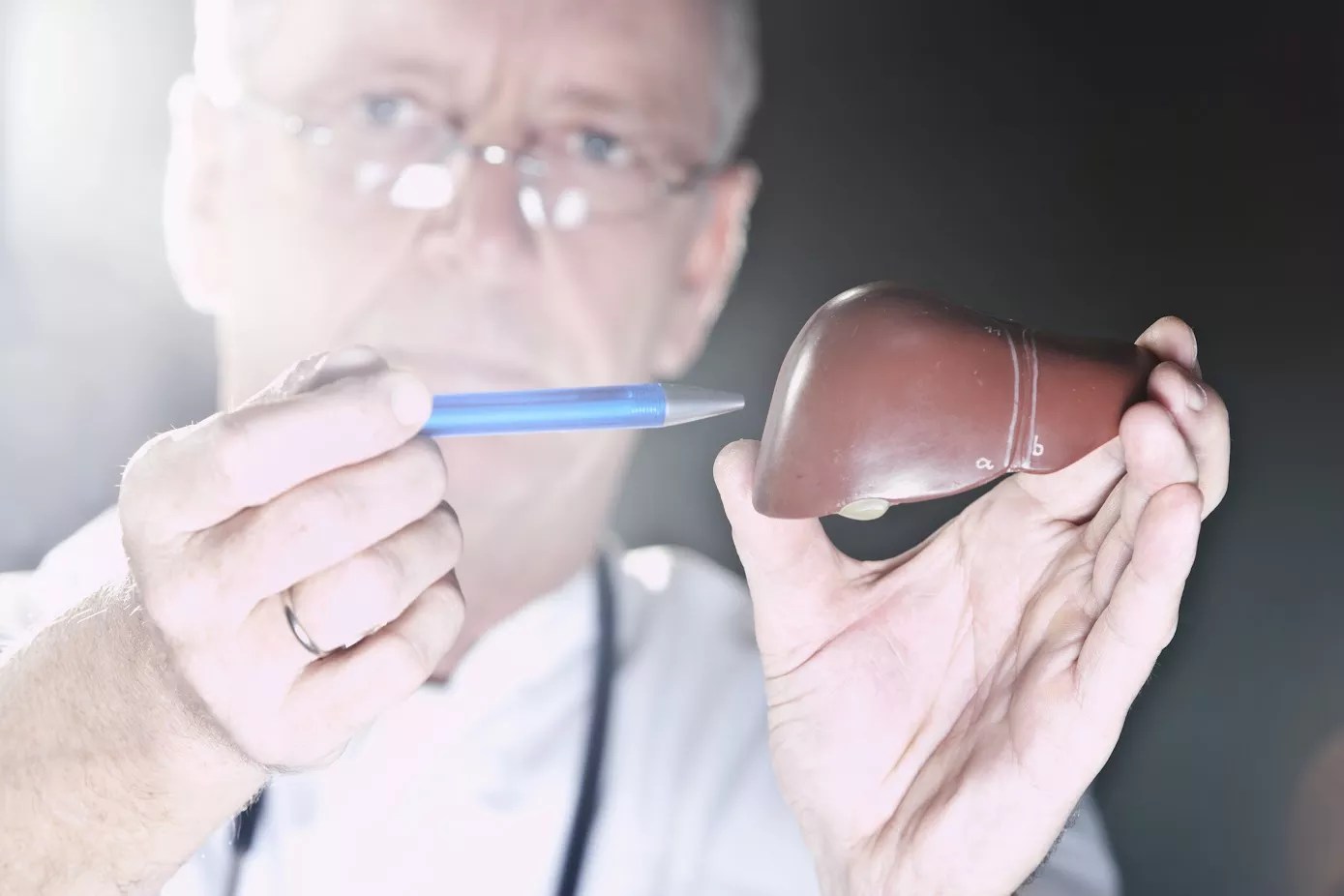
Getty Images

Audio By Carbonatix
Some of the best horror films are inspired by true events.
Take, for example, 1974’s blockbuster hit “The Texas Chainsaw Massacre,” which was based on the life and crimes of killer Ed Gein in the 1950s. Also known as “the Butcher of Plainfield,” Gein exhumed corpses from graveyards and made keepsakes from their bones and skin.
But those kinds of creepy things only happen in small-town America, right? Well, not quite.
After digging through history books, periodicals and news releases from universities, Phoenix New Times found seven of the Grand Canyon state’s stranger-than-fiction tales of human experimentation. From consensual experiments involving scientists to downright shocking cases of abuse or malpractice, prepare to see a darker side of our perpetually sunny state.

FBI agents described what they found at the Biological Resource Center as ‘”Frankenstein”-ish.
Joyce Hankins
1. The ‘human chop shop’
Who: People who donated their bodies to science
What: The facility that took the bodies misled partners about what would be done to them, according to Military Times
When: The FBI raided the facility in January 2014
Where: Biological Resource Center, Phoenix
Why: The FBI was investigating claims that BRC was selling donated body parts for profit, ABC 15 reported
Voluntary: No
The Biological Resource Center was a for-profit body donation company headquartered in Arizona. Donors thought their deceased bodies would go to medical researchers who were trying to find cures for diseases such as Alzheimer’s.
But a January 2014 raid revealed a grisly scene.
According to CNN, FBI agents found bodies piled on top of one another, torsos without heads, buckets full of body parts and a cooler full of dismembered penises.
“I observed a large torso with the head removed and replaced with a smaller head sewn together in a ‘Frankenstein’ manner,” former Phoenix FBI agent Mark Cwynar said.
The FBI brought the story to light in 2015, triggering a lawsuit filed by 33 family members of people whose bodies had been donated to the facility. They sued BRC and its owner, Stephen Gore. (Yes, that is his real name.)
The coalition’s attorney, David TeSelle, said Gore’s business wasn’t clear about the fact that it typically dismembered donated bodies and sold the parts to make a profit, according to the Arizona Republic. Gore’s lawyer allegedly fired back that all of the plaintiffs had signed consent forms.
However, donors and their families claimed they specifically checked a box on their consent form that said, “No, I do not authorize Biological Resource Center to use this bequest for such special nonmedical projects.”
The jury ruled that BRC owed $58 million to the families impacted by the company’s actions.

Former Maricopa County Sheriff Joe Arpaio became notorious for his treatment of incarcerated people, many of whom were forced to live outdoors and wear pink underwear.
Getty Images
2. Arpaio’s Tent City
Who: Former Maricopa County Sheriff Joe Arpaio
What: Prisoners had to wear pink underwear in the outdoor jailhouse known as Tent City
When: 1993 to 2017
Where: Phoenix
Why: Shocking forms of punishment
Voluntary: No
Former Maricopa County Sheriff Joe Arpaio held the office for 24 years and became notorious for his racial profiling and inhumane treatment of incarcerated people.
During his first year in office in 1993, Arpaio erected Tent City, an open-air jail famous for leaving imprisoned people outside in the scorching summer heat. The jail was touted by the former sheriff as an inexpensive answer to prison overcrowding. When prison property started disappearing, Arpaio came up with his second inexpensive solution.
In an effort to emasculate male prisoners who were stealing white boxers, Arpaio ordered that all the boxers be dyed pink. When handcuffs also started disappearing, he ordered pink replacements.
The Guardian referred to the “prison experiment” as a source of pride for Arpaio, who invited the media to witness new cohorts of people being issued pink undergarments after arriving in Tent City.
The infamous pink boxers also became a fundraising arm for Arpaio, who still sells replicas online for $20 a pair.
Arpaio even bragged about serving prisoners the cheapest meals in the country and touted the savings to taxpayers by providing two, instead of three, meals a day.
His successor, Paul Penzone, took down Tent City in 2017, but the experimental punishments Arpaio came up with will go down in history.

The body of a grandmother went to a U.S. Army experiment about roadside bomb damage.
Danie Franco
3. Grandma in the Pentagon
Who: Doris Stauffer, an Arizona mom and grandmother
What: Her son Jim donated her brain to BRC for dementia research
When: 2013
Where: Biological Resource Center, Phoenix
Why: The Biological Resource Center sold and shipped most of her body to the U.S. Army for bomb research, according to the Washington Post
Voluntary: No
Jim Stauffer donated the body of his mother, Doris, to the Biological Resource Center to help aid Alzheimer’s research, but the facility detached one of her hands for cremation and sent him the remains, according to Reuters. The rest of her remains went not to a doctor but instead to the U.S. Army for an experiment measuring roadside bomb damage.
Reuters said BRC sold parts from about 5,000 bodies during its decade in business. With donated bodies such as Stauffer’s fetching a hefty $6,000 each, the human chop shop was lucrative work.
The discovery that his mother’s body was being used in this way horrified Jim, Reuters said. Although he consented to Alzheimer’s experiments, he had no idea she’d ever be involved with testing explosives. Reuters reported that army officials never shared signed consent forms from the donors or their families.

The family of an Arizona man wanted his body to help study how alcohol affects the body. Instead, it went to a military experiment.
Getty Images
4. Ballistic husband
Who: Steve Hansen
What: His wife donated his body to science hoping it would further alcohol research
When: 2012
Where: Department of Defense
Why: The Biological Resource Center misled his widow and used the body in ways she didn’t consent to, according to CBS News
Voluntary: No
Steve Hansen was an Arizona man who wanted to be an organ donor after his death. But after dying from liver cirrhosis in 2012, his organs weren’t in a good enough condition for donation, so medical professors advised his widow, Jill, to donate his body to science instead, CBS News reported.
Jill hoped her late husband would help doctors study how alcohol affects the body. She told CBS reporters she thought he’d be in a medical facility – but his body was sent to the Biological Resource Center, which allegedly sold it to the Department of Defense.
“Court records showed that those donors were used in a variety of military and ballistics testing, with some resulting in ‘the complete mutilation and desecration of the donor’s body,'” according to CBS News.

A surgeon tries to get to a patient’s blood vessels to use a special solution to prevent ice from forming when the body is cooled for storage.
Courtesy of Alcor Media Photography
5. An ambulance to the future
Who: More than 200 paying customers
What: A cryonics facility that lets you freeze your body for possible revival
When: Founded in 1972, still in business today
Where: 7895 East Acoma Drive, Scottsdale
Why: People believe cryonics can help them beat death
Voluntary: Yes
Current science lacks the means to reanimate deceased bodies, but some people see it as a risk worth taking.
Enter Alcor Life Extension Foundation, a nonprofit scientific research and education foundation headquartered in Scottsdale. On the cutting edge of cryonic preservation, Alcor has been working on an experimental method of freezing a body in a liquid nitrogen vapor chamber in hopes that it can be revived in the future.
This facility offers cryonic services upon death for its nearly 1,415 members, who pay anywhere from $17 to $100 each month for membership dues. Members need a minimum life insurance policy of $200,000 for their whole bodies or $80,000 for their brains alone, according to the company’s website.
“Cryonics is an experiment in the most literal sense of the word,” according to the website, which described the process as akin to an ambulance to the future. “The question you have to ask yourself is this: Would you rather be in the experimental group or the control group? The cryonics group has a chance, but the control group has none.”
Alcor has preserved 208 bodies and brains as of Oct. 16, according to its website.

Havasupai tribe members were tricked into giving blood samples for medical research.
Testalize.me
6. Like vampires, these scientists took blood
Who: About 100 Havasupai Tribe members in Arizona
What: Blood samples were collected to study a genetic link to diabetes
When: Sample collection took place between 1990-94, according to Stanford Law School
Where: Arizona State University; Havasupai Indian Reservation
Why: Researchers at ASU used the samples for different purposes than just diabetes research
Voluntary: No
In 1989, Havasupai Tribe members approached ASU anthropology professor John Martin to see why diabetes cases in their community were rising, according to the American Medical Association. Although approximately 100 members signed a broad consent form to donate blood, each thought they were only donating blood to find a link to diabetes.
Researchers, however, used the blood samples to examine mental illness, inbreeding and even migratory patterns that contradicted Havasupai traditional beliefs.
Once this came to light, the tribe filed a legal complaint against ASU in 2004, accusing the researchers of failing to provide informed consent, violating their civil rights and causing emotional distress.
After seven years of legal proceedings, the two parties reached a settlement in April 2010. ASU agreed to return the blood samples and pay $700,000 to the tribe. It also agreed to support the tribe by funding a health clinic and providing scholarships.
The blood samples eventually were returned to the tribe and buried according to tribal traditions. Each year, the Havasupai celebrate Blood Victory Day.
7. Biosphere 2: Electric Boogaloo
Who: An eight-person crew of researchers
What: They went into a closed environment designed to re-create Earth’s ecosystems
When: Sept. 26, 1991, to Sept. 26, 1993
Where: Oracle
Why: To see how well a crew could survive in a technosphere
Voluntary: Yes
Living in Arizona’s scorching heat may make you yearn for the lush greenery of a jungle with climbing vines and muggy rivers. However, if you drive 116 miles south of Phoenix, you’ll find a unique escape: Biosphere 2.
This 32-year-old desert facility is unlike any other in Arizona. Think of it as a live-in terrarium. It boasts five different biomes under glass: one for the ocean, mangrove wetlands, tropical rainforest, fog desert and savanna grassland, respectively.
Biosphere 2 gained fame for its inaugural mission in 1991 when a team of eight volunteers donned red jumpsuits and entered an air-tight, pressurized habitat with the ambitious goal to create something akin to a self-sustaining colony on another planet.
Lasting until 1993, the experiment was fraught with numerous challenges. Oxygen-gulping bacteria spawned and caused oxygen levels to drop so significantly that some participants said they “felt as if they were living at 14,000 feet,” according to the New York Times. The bees and hummingbirds quickly died, preventing the pollination of food-bearing crops. And then the cockroaches took over.
The calamities caused the group to split into two camps: those supporting emergency oxygen being pumped into the biosphere, and those against it. The experiment was deemed a colossal failure.
“In short, the Biosphere 2 experiment failed to generate sufficient breathable air, drinkable water and adequate food for just eight humans, despite an expenditure of $200 million,” ecologist Rebecca Stewart and her colleagues declared.
You can still visit it today. Adult tickets cost $25; seniors pay $23; kids aged 5-17 get in for $15.